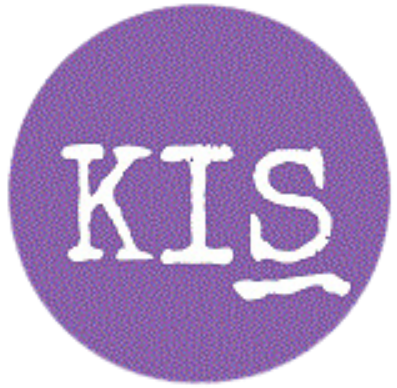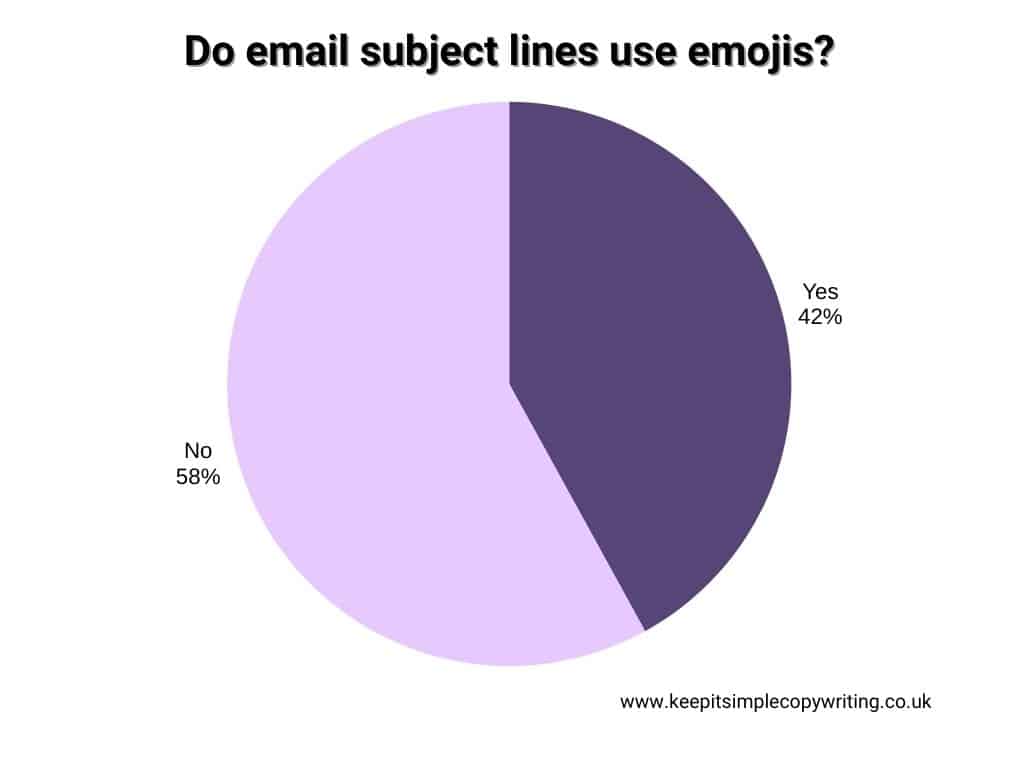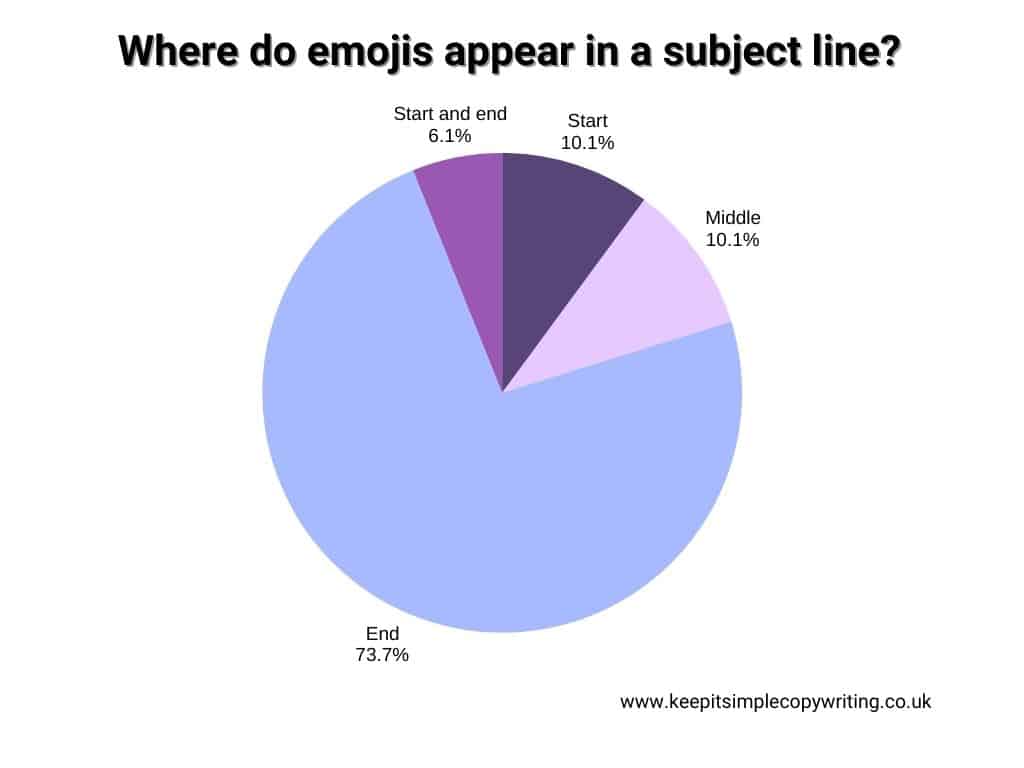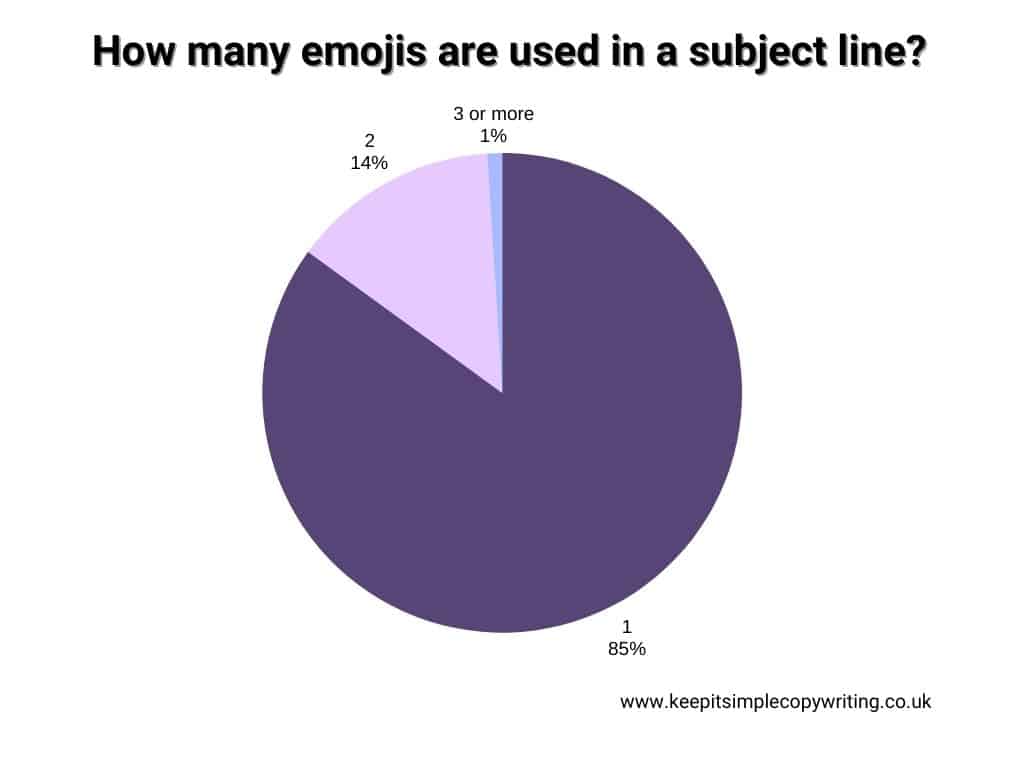Should you use emojis in B2C email subject lines, and if so, how should you use them?
I’ve gone through hundreds of emails so you don’t have to!
I don’t know about you, but I’ve noticed that more and more email subject lines now have emojis in them.
Emojis came to prominence in the UK about ten years ago when I worked in marketing.
Back then, I was pretty much told in definitive terms not to use them across our marketing channels as they were ‘unprofessional’ and ‘tacky.’
Oh, how times have changed!
You can’t open a social media message, email, or blog article without seeing at least one.
One night I was vegging out watching telly and absently scrolling through my phone – as you do.
I saw an email ping into my inbox that had a subject line that looked like this:
Seriously, that’s a lot of emojis, right?
That got me thinking about best practices when it came to emojis in B2C subject lines.
How many are acceptable, and are there any emojis that are more popular than others?
Join me as I divulge the results of the quasi-scientific study I did.
The methodology
I analysed a grand total of 858 B2C emails as part of this study, from 100 different brands. The brands ranged from everything from fashion and beauty to food and travel.
I reviewed the email subject lines between August and September 2024. Yep, I signed up for a lot of stuff.
How many B2C subject lines use emojis?
42% of email B2C subject lines contain emojis while 58% don’t.
While an increasing number of companies are using emojis in their email marketing, many brands continue to steer clear.
Of course, it depends on the industry you’re in and who you’re targeting.
A fast fashion clothing company targeting Gen Zers is more likely to use emojis than an insurance provider targeting Baby Boomers.
Interestingly, brands don’t use emojis in their marketing all the time.
While I didn’t empirically measure the results, I did notice that businesses used a mix of emojis and no emojis in their subject lines.
Brands do extensive testing to see which subject lines resonate best with customers, and my guess is that is a part of it.
Where should emojis go in a subject line? Start, middle, or end?
When I started to use emojis in subject lines, the advice was to always put your emoji at the end.
The logic behind this was threefold:
- It allowed for smoother reading, increasing the odds of the recipient opening the email
- If a mobile device didn’t render an emoji correctly, it didn’t appear as an ugly blob at the start of the subject line
- If a mobile device cut off a subject line, the recipient would still get the gist of the message
It seems that the majority of email subject lines still follow this protocol, with 73% of subject lines having an emoji at the end.
However, 10% of B2C subject lines have the emoji at the start, and 10% have the emoji bang in the middle, which I found interesting.
Now mobile devices are more advanced, they’re more likely to render emojis correctly, meaning less risk putting them at the front end of the message.
Alternatively, take a fourth option – 6% of email subject lines place an emoji at both the start and end.
This can be a clever tactic as it frames the subject line, grabbing the eye and getting attention.
Although it means less space to play with, meaning you have to make your subject line shorter.
This leads us neatly onto the next question…
How many emojis should you use in an email?
I regularly use Mailchimp to write emails.
When you create your subject line, you get told off if you use more than one emoji.
And to be fair, I can see the logic.
Too many emojis take up space and can look messy. Although that’s just probably my grumpy elder Millennial mindset talking.
It looks like 85% of email subject lines share both Mailchimp and I’s thoughts about using one emoji and one emoji only.
14% of B2C subject lines use two emojis, while 1% opt for three or more.
Should emojis match?
Now, a follow-up question.
If you use two or more emojis in your subject line, should they be the same?
44% of emojis in email subject lines match, while 56% don’t.
Of course, there are advantages to both.
The same emojis promote uniformity and reiterate your message, while different ones make your message appear more lively and vibrant.
Which emojis are most commonly used in email B2C subject lines?
As you might expect, there was a lot of variety when it came to the type of emojis used by brands.
I counted a total of 157 different emojis when doing my research.
48% of these emojis were only used once.
Only 4% of these emojis were used enough to register in double figures.
Here are the top ten emojis I counted:
- Sparkles
– 20
- Police car light
– 19
- Eyes
– 17
- Alarm clock
– 15
- Money mouth face
– 14
- Sun
– 11
- Fire
– 10
- Yellow star
– 9
- Star struck
– 8
- White heavy tick
/ Megaphone
/ Wrapped gift
– 7
I expected to see some of these emojis in the top ten:
- An alarm clock is commonly used for flash sales or when a special offer is coming to an end
- Eyes – you want people to check out your deals
- And a face with money coming out of it… enough said
However, some were unexpected. A police car light? I honestly didn’t see that one coming. I guess it inspires the fear of missing out (FOMO) in people.
Reading through all the email subject lines, I did spot some common themes:
- A waving hand (
) is common in onboarding/introduction emails
- Alongside the alarm clock, a lightning bolt (
) is commonly used for flash sales
- Christmas (
) and Halloween-themed (
) emojis were not used in August, but skyrocketed in popularity when it was mid-September
- Some businesses stick to one type of emoji to promote their brand. For example, all uses of a purple heart (
) were by the same business
- Thematic emojis are often used together. For example, flowers (
) were frequently seen in the same subject line
- Nobody used the lift emoji (
) at all. Absolutely devastated
Another thing to consider is whether your emoji of choice has positive or negative sentiment.
You ideally want to evoke an emotion in your email recipient to get them to take action.
So it’s best to use an emoji that has either a positive or negative connotation rather than something neutral.
However, the issue with positive, negative, and neutral sentiment is that emojis mean different things to different people.
Take the ‘thumbs up’ for example. While older people would typically see this emoji as positive, younger people may consider it passive-aggressive.
To some people, the peach and aubergine might just be lovely fruits and vegetables, while to others… well, I’ll leave it to your imagination.
When using emojis in subject lines you want to understand your target audience to ensure you get the right message across.
Do emojis in your B2C subject lines increase the odds of your emails going to spam?
Not necessarily.
Of all the emails I investigated, none of them, whether they included emojis or not, landed in the spam filter.
It all comes down to having a good sender reputation. This is a score assigned to the email domain and IP address you send emails with. If you’re in good standing, you can typically use emojis without issues.
If not, there’s an increased chance that using emojis in your subject lines could cause your emails to go to the spam folder.
Here are a few ways you can make sure you have a good sender reputation so you can use emojis with impunity:
- Keep an eye on your unsubscribe rate – keep it below 0.5% for each campaign you send
- Frequently clear out your email list – if someone doesn’t engage with your email, it’s okay to get rid of them after a while
- Don’t send emails to people who haven’t opted in to receive them – no gathering email addresses from websites or lead lists
- Create good content that encourages people to open your emails and click on your links
In conclusion: Are emojis in B2C subject lines good or bad?
I’ll be honest, researching and writing this article was a massive eye-opener. When I started marketing, people told me that emojis needed to be handled in a certain way.
Don’t use more than one, only use it at the start, stick to certain emojis unless you want your open rates to tank…
However, it’s interesting to see that things are changing and marketers are throwing out the rulebooks.
If you want to use eleven emojis in your cold email subject lines, that’s absolutely fine, as long as your target audience will respond in the right way.
I regularly write about digital marketing topics in detail, including copywriting, email marketing, and SEO.
If you want to read more, why not check out my blog










 – 20
– 20 – 19
– 19 – 17
– 17 – 15
– 15 – 14
– 14 – 11
– 11 – 10
– 10 – 9
– 9 – 8
– 8 / Megaphone
/ Megaphone  / Wrapped gift
/ Wrapped gift  – 7
– 7 ) is common in onboarding/introduction emails
) is common in onboarding/introduction emails ) is commonly used for flash sales
) is commonly used for flash sales ) and Halloween-themed (
) and Halloween-themed ( ) emojis were not used in August, but skyrocketed in popularity when it was mid-September
) emojis were not used in August, but skyrocketed in popularity when it was mid-September ) were by the same business
) were by the same business

 ) were frequently seen in the same subject line
) were frequently seen in the same subject line ) at all. Absolutely devastated
) at all. Absolutely devastated
